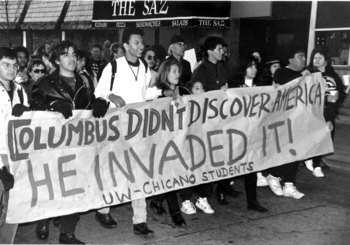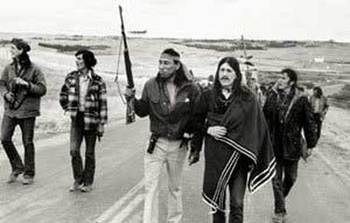Activists Fight for Civil Rights
For many years, members of the Lakota tribe have been active in civil rights movements and they are often seen protesting events and projects that cause potential harm or threats to reservations or Indian culture. Many Native American activists have stood steady over the years, fighting to preserve their culture and beliefs, even if it means taking on an entire country.
Native American Rights Movement
 Ever since the arrival of Europeans in the United States, Native Americans and tribe members have been fighting for their rights. They continue to fight for these rights often through activism and various movements to uphold their string beliefs. The Indian Civil Rights Act was passed in 1968, and it was a major step towards offering Native Americans civil rights. The law guaranteed rights for tribe members and many are the same rights that are in the Bill of rights, including freedom of speech and a fair and speedy trial. The problem regarding civil rights amongst Native Americans today lies in the fact that many of these people are dual citizens, residing in the US, but on Indian Reservations. Today, Native Americans, such as the Lakota tribe, benefit from the same rights as every other resident of the United States and they are always joining forces with members to protect their land and their string cultural beliefs. While many are activists and take a strong stance on issues, Native American protests are known to be peaceful acts that are designed to protect the heritage of the tribe and all remaining members.
Ever since the arrival of Europeans in the United States, Native Americans and tribe members have been fighting for their rights. They continue to fight for these rights often through activism and various movements to uphold their string beliefs. The Indian Civil Rights Act was passed in 1968, and it was a major step towards offering Native Americans civil rights. The law guaranteed rights for tribe members and many are the same rights that are in the Bill of rights, including freedom of speech and a fair and speedy trial. The problem regarding civil rights amongst Native Americans today lies in the fact that many of these people are dual citizens, residing in the US, but on Indian Reservations. Today, Native Americans, such as the Lakota tribe, benefit from the same rights as every other resident of the United States and they are always joining forces with members to protect their land and their string cultural beliefs. While many are activists and take a strong stance on issues, Native American protests are known to be peaceful acts that are designed to protect the heritage of the tribe and all remaining members.
Recent Native American Activist Movements
Perhaps the most well-known cases of activist have been in regards to the proposed pipelines that are planned to run through Indian territories. In 2015, the battle against the Dakota Pipeline gained much news coverage and support from tribes across the nation. Sioux tribe members as well as other Native American tribes joined forces to protect the building of the Dakota Access Pipeline that would have a severe affect on native communities and land. The protest lasted for months and was known as the largest display of activism in history. While it received little national coverage, it was spread across social media and quickly became a concern even for those that have no ties to the Native American culture.
Another memorable moment occurred in 2014 when the Keystone Pipeline was voted against by the Senate. This was a huge win for the Lakota tribe and one activist, Greg Grey Cloud was arrested for singing a Native American chant in celebration of the vote. These two forms of activism show that modern Native Americans still come together for a common cause and will continue to fight pipelines that are to be built passing through sacred land.
Activism Throughout History

For many years, members of Sioux and Native American tribes have been standing their ground, fighting for their rights. In 1969, a group of Indians landed on Alcatraz and for 19 months, protested the island's use in hopes of reclaiming the rock. Activists soon took a stand on Mount Rushmore in 1970 to reclaim land that had been promised to The Great Sioux Nation. In 1973, hundreds of activists occupied Wounded Knee. For 71 days, over 200 Sioux Indians held their ground and called attention to the unsafe living conditions and mistreatment of Natives from local and federal agencies.
For the years to come, Native American activists have been involved in many battles, always trying to claim land that was theirs or to protect the loss of future land. The Sioux tribes are known to be the most bonded in the country and will remain a strong force that will continue to fight for civil rights for all Native Americans.
